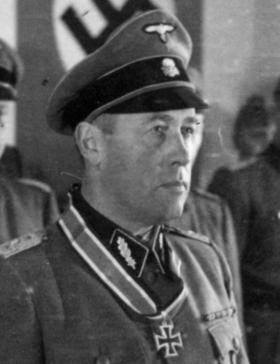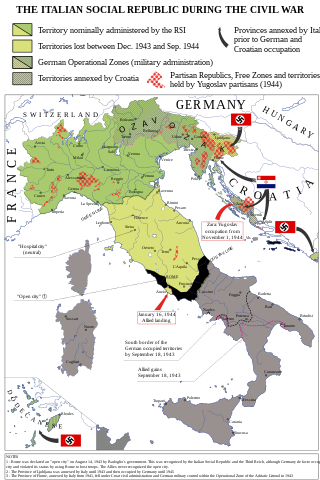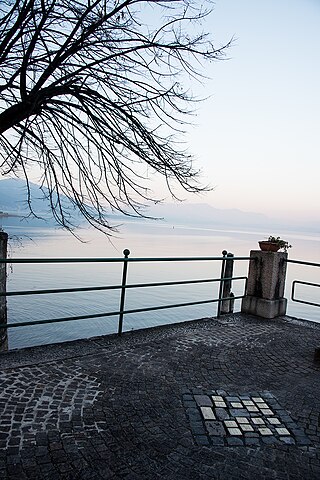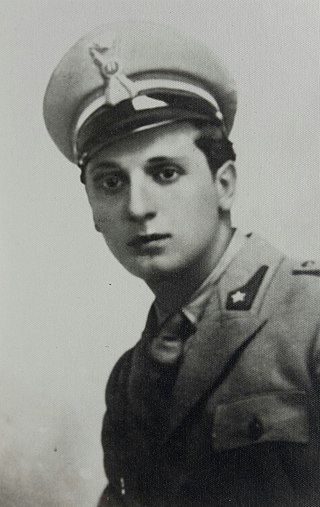
The Waffen-SS was the combat branch of the Nazi Party's paramilitary Schutzstaffel (SS) organisation. Its formations included men from Nazi Germany, along with volunteers and conscripts from both German-occupied Europe and unoccupied lands. With the start of World War II, tactical control was exercised by the Oberkommando der Wehrmacht, with some units being subordinated to the Kommandostab Reichsführer-SS directly under Himmler's control. It was disbanded in May 1945.

The Malmedy massacre was a German war crime committed by soldiers of the Waffen-SS on 17 December 1944 at the Baugnez crossroads near the city of Malmedy, Belgium, during the Battle of the Bulge. Soldiers of Kampfgruppe Peiper summarily killed eighty-four U.S. Army prisoners of war (POWs) who had surrendered after a brief battle. The Waffen-SS soldiers had grouped the U.S. POWs in a farmer's field, where they used machine guns to shoot and kill the grouped POWs; many of the prisoners of war who survived the gunfire of the massacre were killed with a coup de grâce gunshot to the head. A few survived.

Joachim Peiper was a German Schutzstaffel (SS) officer, war criminal and car salesman. During the Second World War in Europe, Peiper served as personal adjutant to Heinrich Himmler, leader of the SS, and as a tank commander in the Waffen-SS. German historian Jens Westemeier writes that Peiper personified Nazi ideology, as a purportedly ruthless glory-hound commander who was indifferent to the combat casualties of Battle Group Peiper, and who tolerated, expected, and indeed encouraged war crimes by his Waffen-SS soldiers.

The Ardeatine massacre, or Fosse Ardeatine massacre, was a mass killing of 335 civilians and political prisoners carried out in Rome on 24 March 1944 by German occupation troops during the Second World War as a reprisal for the Via Rasella attack in central Rome against the SS Police Regiment Bozen the previous day.

The 1st SS Panzer Division Leibstandarte SS Adolf Hitler or SS Division Leibstandarte, abbreviated as LSSAH, began as Adolf Hitler's personal bodyguard unit, responsible for guarding the Führer's person, offices, and residences. Initially the size of a regiment, the LSSAH eventually grew into an elite division-sized unit during World War II.

Italian war crimes have mainly been associated with the Kingdom of Italy, Fascist Italy and the Italian Social Republic starting from the Italo-Turkish War then to Pacification of Libya, the Second Italo-Ethiopian War, the Spanish Civil War, and World War II.

Kurt Meyer was an SS commander and convicted war criminal of Nazi Germany. He served in the Waffen-SS and participated in the Battle of France, Operation Barbarossa, and other engagements during World War II. Meyer commanded the 12th SS Panzer Division Hitlerjugend during the Allied invasion of Normandy, and was a recipient of the Knight's Cross of the Iron Cross with Oak Leaves and Swords.

The I SS Panzer Corps was a German armoured corps of the Waffen-SS. It saw action on both the Western and Eastern Fronts during World War II.

The 17th Infantry Division was an infantry division of the German Army, active before and during World War II. Formed in 1934, it took part in most of the campaigns of the Wehrmacht and was decimated in January 1945. Reconstituted in Germany, it surrendered to the Allies in May of that year. The division was responsible for a number of war crimes.

The governments of the German Empire and Nazi Germany ordered, organized, and condoned a substantial number of war crimes, first in the Herero and Namaqua genocide and then in the First and Second World Wars. The most notable of these is the Holocaust, in which millions of European Jewish, Polish, and Romani people were systematically abused, deported, and murdered. Millions of civilians and prisoners of war also died as a result of German abuses, mistreatment, and deliberate starvation policies in those two conflicts. Much of the evidence was deliberately destroyed by the perpetrators, such as in Sonderaktion 1005, in an attempt to conceal their crimes.

Gustav Lombard was a high-ranking member in the SS during World War II. During the war, Lombard commanded 8th SS Cavalry Division Florian Geyer and the 31st SS Volunteer Grenadier Division. He was a recipient of the Knight's Cross of the Iron Cross of Nazi Germany for so-called "anti-partisan" operations around Kovel which involved killing of civilians and burning down villages.
Heinrich Kling was a German Waffen-SS commander during the Nazi era, who served with the Leibstandarte SS Adolf Hitler (LSSAH).

Georg Preuß was a mid-ranking commander in the Waffen-SS of Nazi Germany during World War II. He was a convicted war criminal.

The Holocaust in Italy was the persecution, deportation, and murder of Jews between 1943 and 1945 in the Italian Social Republic, the part of the Kingdom of Italy occupied by Nazi Germany after the Italian surrender on 8 September 1943, during World War II.

Two of the three major Axis powers of World War II—Nazi Germany and their Fascist Italian allies—committed war crimes in the Kingdom of Italy.
The Vinca massacre was a massacre carried out near Fivizzano, Tuscany, by the German 16th SS Panzergrenadier Division from 24 to 27 August 1944 in which 162 Italian civilians were killed.
The San Terenzo Monti massacre, sometimes also referred to as the Bardine massacre or Bardine San Terenzo massacre, was a massacre carried out near Fivizzano, Tuscany, by the German 16th SS Panzergrenadier Division from 17 to 19 August 1944 in which 159 Italian civilians were killed.

The Lake Maggiore massacres was a set of World War II war crimes that took place near Lake Maggiore, Italy in September and October 1943. Despite strict orders not to commit any violence against civilians in the aftermath of the Italian surrender on 8 September 1943, members of the SS Division Leibstandarte murdered 56 Jews, predominantly Italian and Greek. Many of the bodies were sunk into the lake to prevent discovery but one washed ashore in neighbouring Switzerland, drawing international attention to the massacre and prompting an inconclusive divisional inquiry. It is commonly referred to as the first German massacre of Jews in Italy during World War II.

Ignazio Vian was an Italian officer and Resistance leader during World War II.















